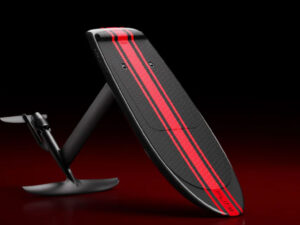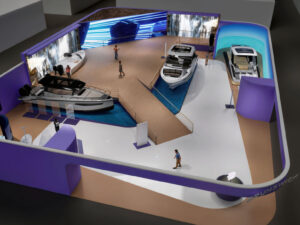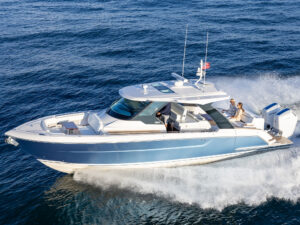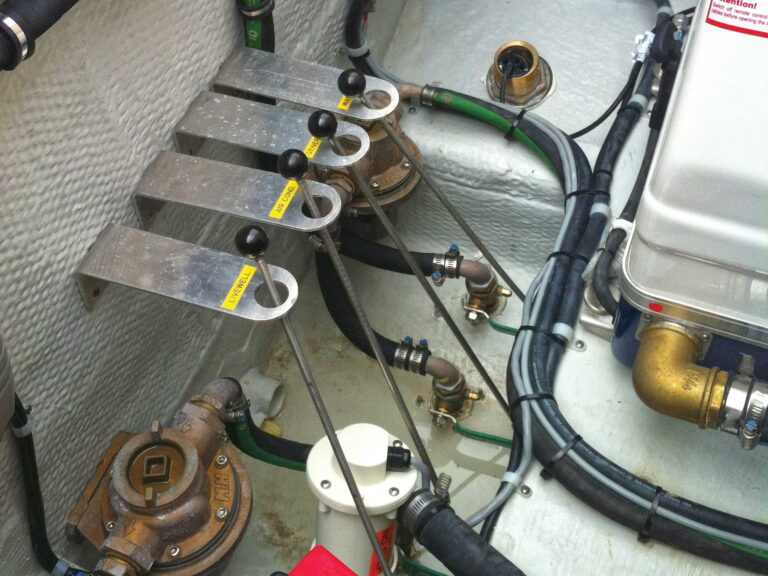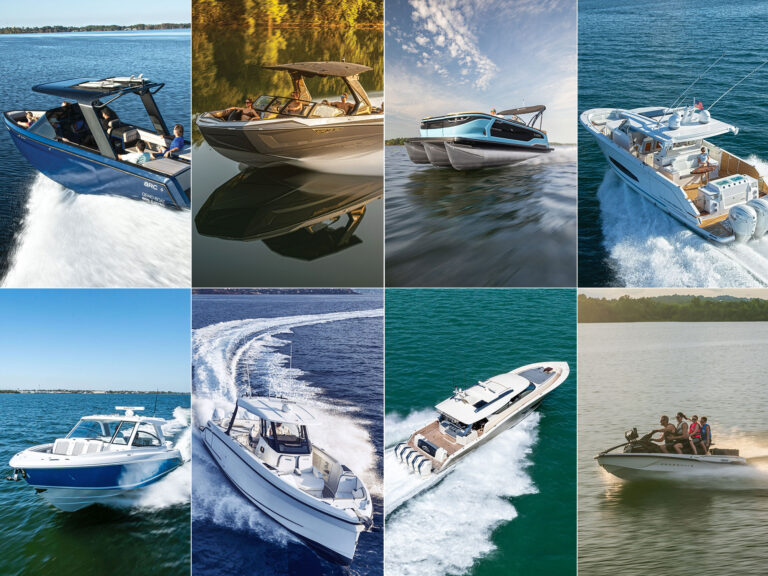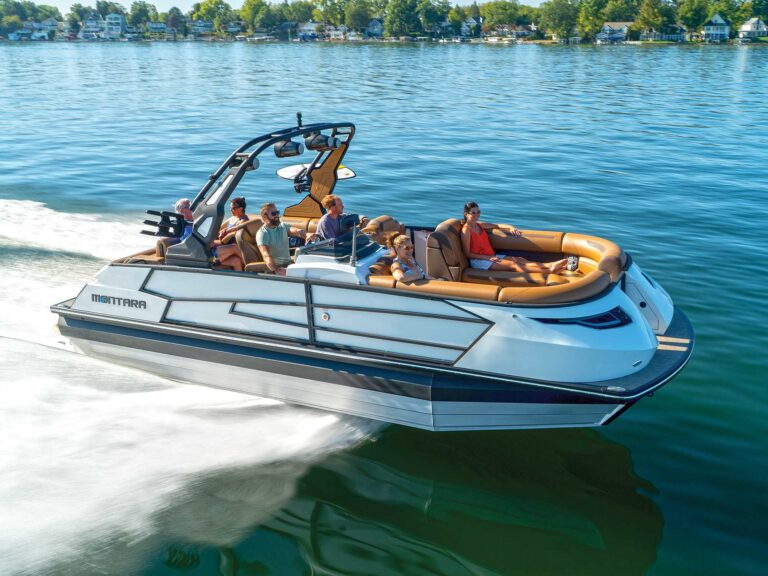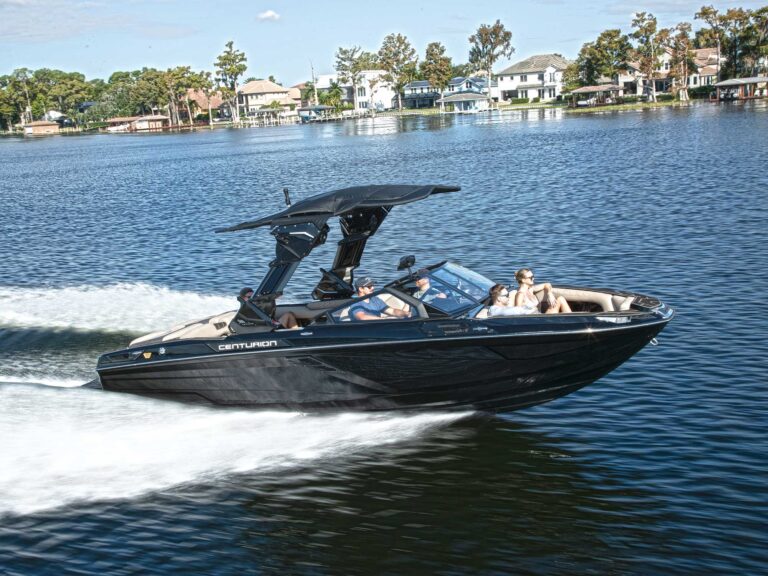
Imagining an electric pontoon boat, you might think of a couple of hours of sedate cruising followed by lengthy charge periods. Hyper Electric Marine sinks that image with a luxury pontoon offering comfort, acceleration, speed, quiet running, and economy.
Fitted with a full-size Tesla battery incorporated into the center pontoon of the boat and a Tesla high-performance electric motor that’s cleverly housed inside the shell of what was a traditional gasoline outboard, the Hyper Electric’s system produces power on par with a 370 hp outboard. Equipped with the stock outboard’s 1.75-to-1 gear ratio spinning a Mercury 15-inch-pitch Enertia three-blade stainless-steel propeller, and well-loaded with six full-bodied men, we reached a top speed of 44.5 mph at 10,800 rpm. Hyper Electric notes that with a lighter load, it has reached 50-plus mph speeds in this boat. Notably, our test boat was fitted with the Hydrofin Super Ride XL, a hydrofoil system for pontoon boats. It retails for $2,995 and was installed by Hydrofin installation professionals.
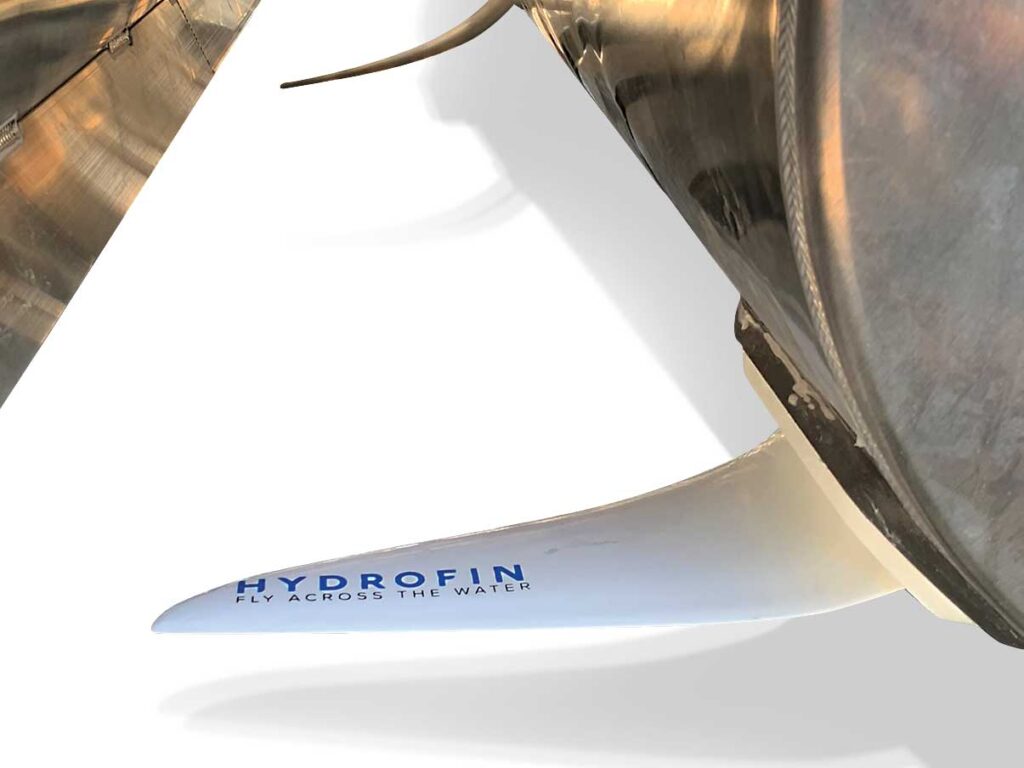
Acceleration proved brisk. We planed in 3 seconds flat, and went from zero to 30 mph in just 8.7 seconds. Below 30 mph, motor noise is nil; it’s mostly wind and water noise. Over 8,000 rpm (about 29 mph), it makes a distinct whine that’s entirely different than a gasoline outboard. At full throttle, my decibel meter registered just 86 dB(A), far lower than the typical outboard, which is usually well into the 90-plus range. Average range at cruise speeds is just over 40 miles on a full charge.
Hyper Electric builds its electric outboard using the shell (midsection, cowl and gear case) from existing outboards. As such, the weight as converted is competitive with four-stroke internal-combustion outboards. With a 25-inch shaft length, weight is 500 pounds. The 400-volt three-phase induction motor is the same one used in a Tesla Model S. The gear case is standard outboard fare, and the propeller shaft accepts existing props. Counter-rotation is available. A proprietary digital management system offers a custom D-Logic display and controller. The 10.1-inch touchscreen shows all system parameters, plus it controls lights, audio and other accessories.
Read Next: Things to Consider When Repowering With Electric Motors
The Tesla battery is incorporated into the structure of the pontoon, with all wiring and connections to the outboard engineered and installed with precision. It’s a very clean layout, with easy access for technicians should the need arise. The battery adds further rigidity to the deck. Hyper Electric claims that this hull has more torsional rigidity and less side-to-side flexing than other non-electric-powered ’toons.
The outboard and tritoon pontoon boat with battery come as a package, which carries a retail price of $165,000 with the charging system. Hyper Electric also offers inboard and sterndrive systems for repower. For more information, visit hyperelectricmarine.com.

Pricing and Specs
| Price: | $165,000 (with charger) |
| LOA: | 24’0″ |
| Beam: | 8’6″ |
| Draft: | 1’6″ (engine up) |
| Displacement: | 5,000 lb. (boat, motor, battery) |
| Motor: | Tesla 400 V, three-phase induction |
| Battery: | Tesla 100 kWh/220-400 VDC |
| Charge Time: | 7.5 hours at 240 V, 15 hours at 120 V |


